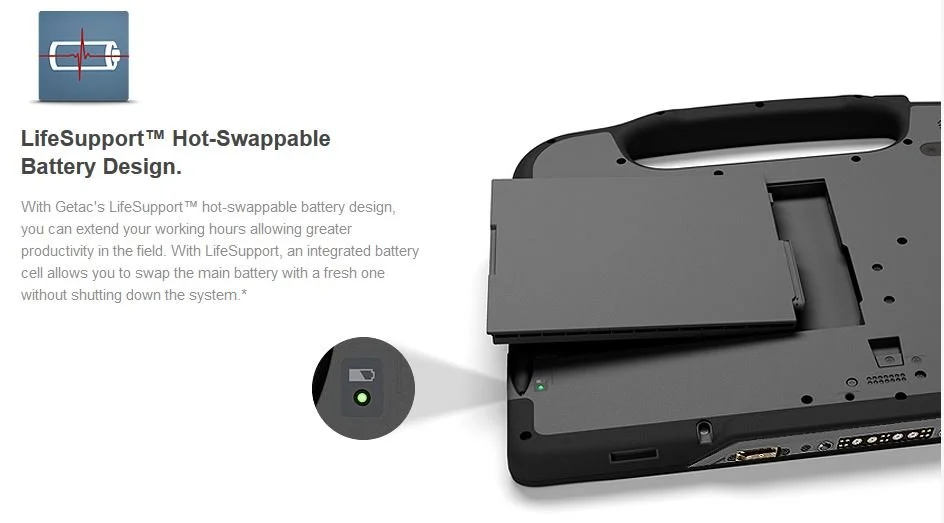What else should I consider when buying a rugged computer besides the price?
When buying a rugged computer, there’s much more to consider than just the price. The “rugged” label is only meaningful if the device truly fits your environment and your needs. Here are the main factors you should evaluate.
Key Considerations
Durability / Environmental Certifications
Look for certifications like the military-standard MIL‑STD‑810H (or older MIL-STD-810G) and ingress protection (IP) ratings (e.g., IP65, IP66) which indicate dust/water resistance.
These tests cover things such as drops, shocks, vibration, extreme temperatures, humidity and altitude.
Make sure the ruggedness claims are real (some devices may be “rugged-looking” but not fully certified) and certification has been completed by a third party (not self-certified).
Work Environment & Use Case
Are you outdoors in sunlight? Then you’ll need a bright display (good nits), anti-glare, maybe touch/glove-compatible.
Are you in cold or hot climates? Check operating temperature specs.
Are you concerned about portability vs ruggedness? Fully rugged machines tend to be heavier/bulkier. Some “semi-rugged” might suffice if conditions are moderate. Also consider rugged case for non-rugged device which can often be paired with keyboard and other accessories to provide a comparable solution and be overall lighter.
Performance / Specifications
Even rugged machines need to deliver on CPU, RAM, storage — you don’t want to sacrifice performance just for toughness unless you really don’t need it.
Consider your software use-case: Are you doing heavy workloads (CAD, field data collection, remote editing) or lighter tasks (field forms, spreadsheets)?
Battery Life & Power / Portability
Outside or field work often means less access to power — check how many hours the battery lasts under rugged conditions, and whether batteries are swappable / hot-swappable. You might be able to add a vehicle charger to extend the battery life whilst onsite or driving between sites.
Weight and size matter more when you’re carrying the device or working mobile.
Hot-swap battery tech requires bridge battery be installed.
Connectivity / Ports / Expandability
Field work often requires extra connectivity: USB-C, Ethernet, HDMI, sometimes legacy ports, LTE/5G, GPS etc.
Also look at how well sealed the ports are (to maintain ruggedness).
Consider modularity: some rugged machines provide user-replaceable modules for storage, battery, ports, etc.
Warranty / Serviceability / Total Cost of Ownership (TCO)
Because rugged machines cost more upfront, it’s crucial that they have good manufacturer support, warranty terms, availability of parts, and strong service presence.
Sometimes, a rugged machine actually has a lower total ownership cost because of fewer failures, less downtime etc. The initial price is just one piece — what you spend over the life (repairs, downtime, replacements) could be far more.
If you do need to get part replaced/repair outside of warranty, how much will they cost?
Ergonomics / Usability in Harsh Conditions
Keyboard usable with gloves, touch screen that works when wet, display readable in bright sun, good cooling in high heat, spill-resistant keyboard, etc.
For large projects, request a demo unit for proof of concept that enables you to complete user acceptance testing onsite.
8. Brand / Model Reputation / Reviews
Rugged computers are a more specialized category — considering brand reliability, the years of rugged-experience they have, and reading reviews helps.
Rugged devices face higher demands — a brand that has done this for years is more likely to have thought through the details.
9. Future-proofing & Scalability
Are you going to using this machine for many years? Check whether the machine allows upgrades (RAM, storage), compatibility of drivers/OS support, and enough headroom.
You want your rugged investment to last — and not become obsolete quickly.Is this rugged computer purchase going to be part of a rollout? Check the lifecycle of the device with the manufacturer to ensure the same model will be able over the life of your procurement timeframe.
Contact SLATE PC for an individual consultation about your use case requirements today

